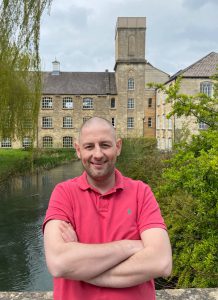This blog is the second in a series of three by The People’s Recovery Project (TPRP), a charity that aims to build sustained recovery for people experiencing homelessness and addiction. As a follow up to their involvement in the NIHR SSCR funded Strengthening adult safeguarding responses to homelessness and self-neglect study, HSCWRU invited TPRP to host an event at King’s. This blog by TPRP co-founders Ed Addison and Nathan Rosier shares further messages from this event and focuses on ‘lived experience’.
The People’s Recovery Project event at HSCWRU brought together individuals from across the homelessness and substance misuse sectors, and within the group were many people with both expertise and lived experience. From the foundation of TPRP, at the core of development has been the involvement of people with lived experience of both homelessness and substance use. At the event we heard from community member Danny who has been supporting the development of the charity over the past year, and who spoke of his personal lived experience of addiction and of being on the streets:
Danny’s story

Danny
I was homeless in Westminster for about 20 years. In this time, I was in and out of homelessness services, police custody and incarcerated in prison on a number of occasions. I never wanted to go to rehab and did not see this as an option. The first time I went was due to a drug rehabilitation requirement issued by the court, and it was a way of getting me out of prison. I was not ready for rehab at this point.
When you are accessing different homelessness services, such as hostels and day centres, it is really difficult to access rehab: you have to jump through so many hoops. It felt like there was always a constant block and if it was not the limitations of one service it was due to the requirement of another organisation, or legislation that says you have to have a local connection, live in the right catchment area, or meet a certain criteria.
Eventually I was given the opportunity to go to rehab which changed my life, I was able to move forward in my life and ended up moving to Gloucester. I found that this was not for me. I was in a City I did not want to be in. I ended up coming back to London and lapsing and having a one-night bender. In the morning I woke up and the first person I rang was my key worker at the time, who happens to be one of the co-founders of The People’s Recovery Project. With his support I arranged a ticket to get to Manchester and moved there to be close to my family. I have not looked back since: I’ve passed my driving test, I’ve been on holidays and I got married last year. It’s onwards and upwards for me.
In my opinion The People’s Recovery Project approach is a game changer. They are seeing things from the person’s perspective and offering people a genuine opportunity to recover from their situation. They aim to offer people residential treatment without lots of conditions. In my experience there are so many groups you have to go to: The blue groups, the green group and then the yellow group, and that’s before you get to the other funding panels. By the time you’ve made it to the fourth funding panel you are back on the streets and using drugs. This was the block for me, all the hoops you have to jump through. If I had been offered the opportunity to go to treatment in the first 4 to 6 weeks of using, I think I would have gone. Eventually I had the willpower because I wanted to change the way I was. For some people that is not an option, and it is a case of now or never. If you can get to people early then that is going to be so important.
With emphasis on a commitment to co-design, Danny’s experience provides part of the guidance and direction that our approach is reliant upon. Danny is now in recovery and not using substances for over four years. He is back living close to his family, is married and in full-time employment.
Through stories such as Danny’s we understand the huge potential for people to change their lives when given the opportunity of residential treatment, but unfortunately, examples are rare in the midst of a worsening crisis on our streets. TPRP takes the position that people should not be left on the streets: if someone is able to articulate that they would like residential treatment, they should be offered the opportunity. People with the means to self-fund their own treatment do not need to ‘prove’ that they are ready. Preparation for residential treatment is a crucial intervention point and needs to be carefully considered when working with individuals who have experienced street homelessness and the associated trauma that this inevitably brings. From our professional knowledge and scoping research, residential treatment is currently not accessible or achievable for most people who are sleeping on the streets. We are working to change this, and invite responses and collaborators to join the conversation.
Ed Addison and Nathan Rosier are co-founders of The People’s Recovery Project.
Other blogs in this three-part series:
Blog 3: A peer-led community – improving routes into residential treatment